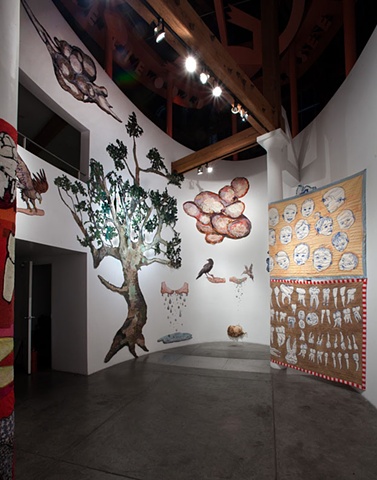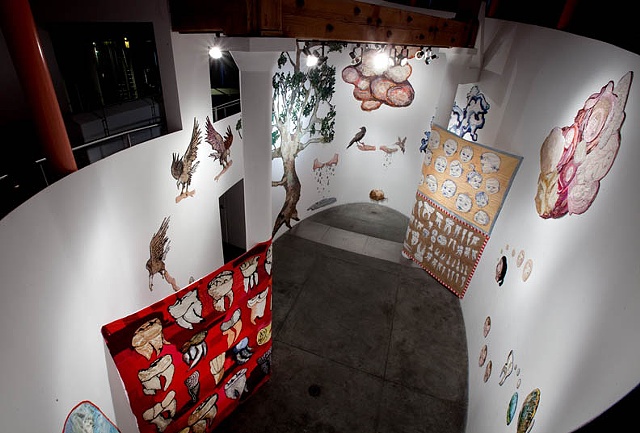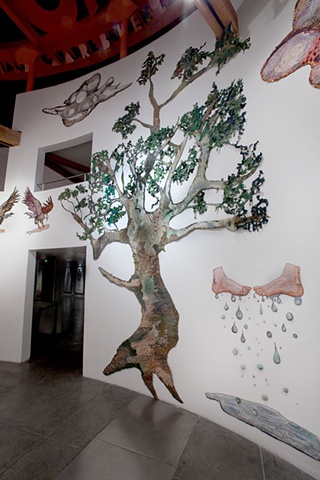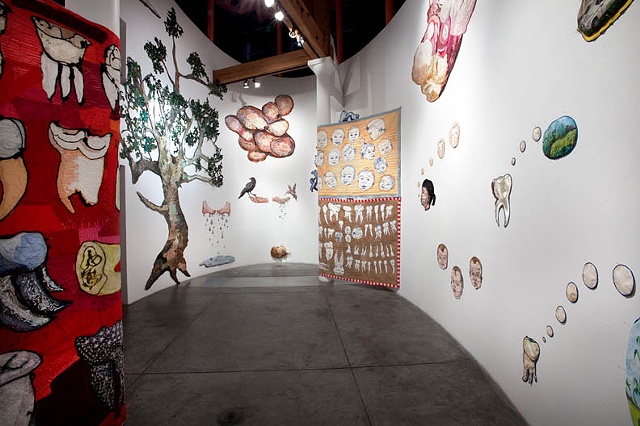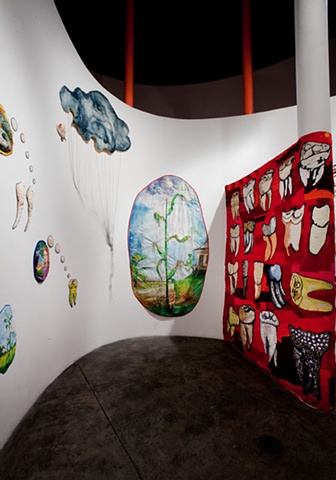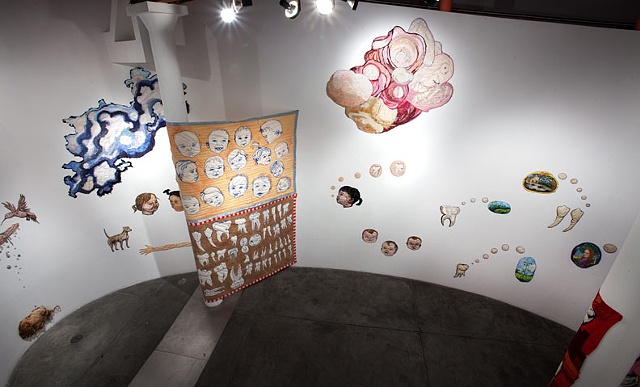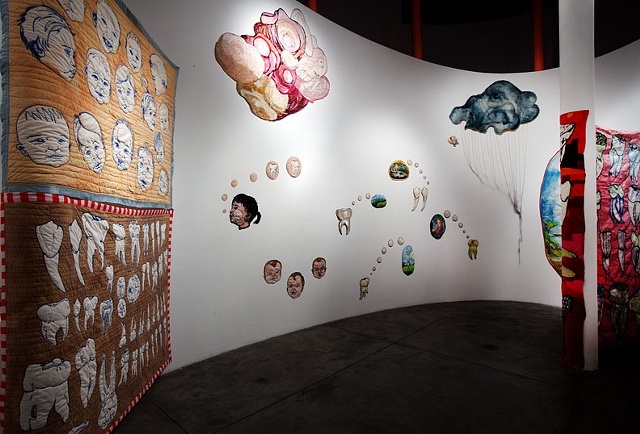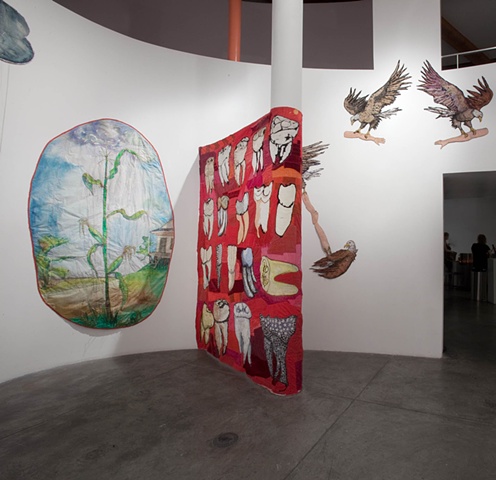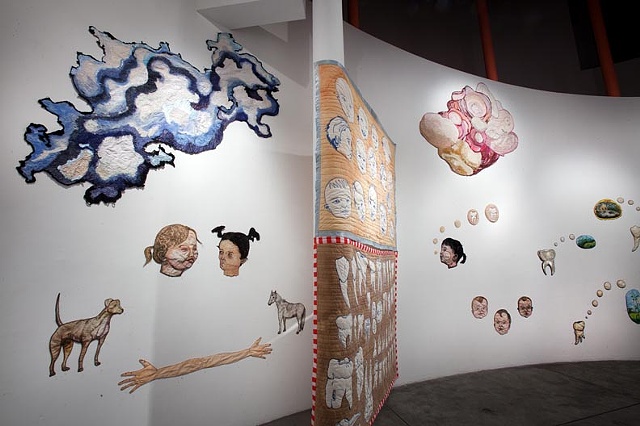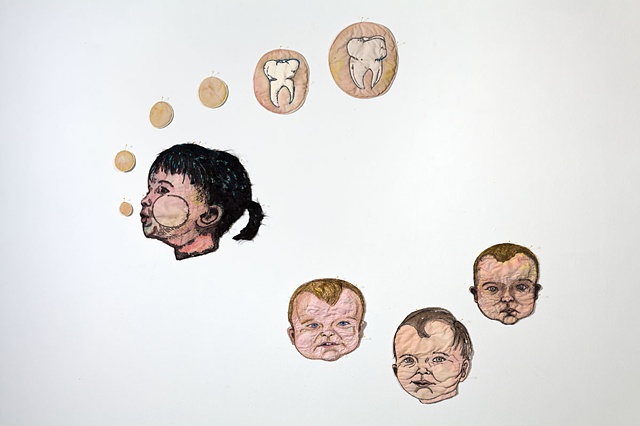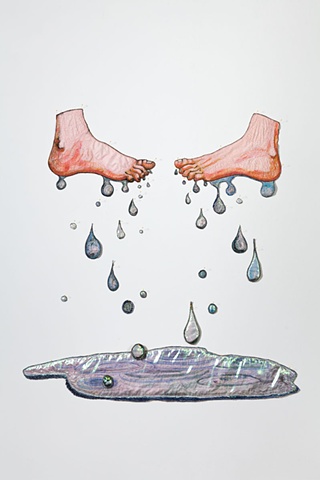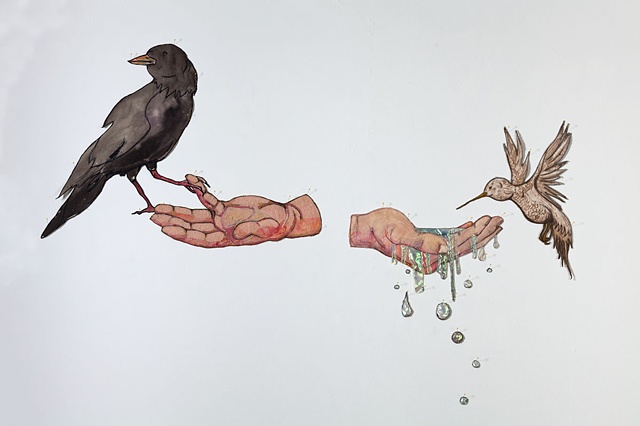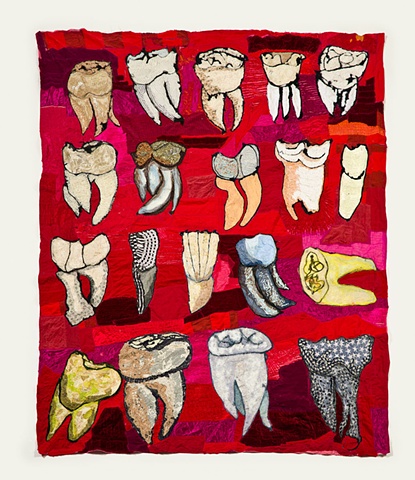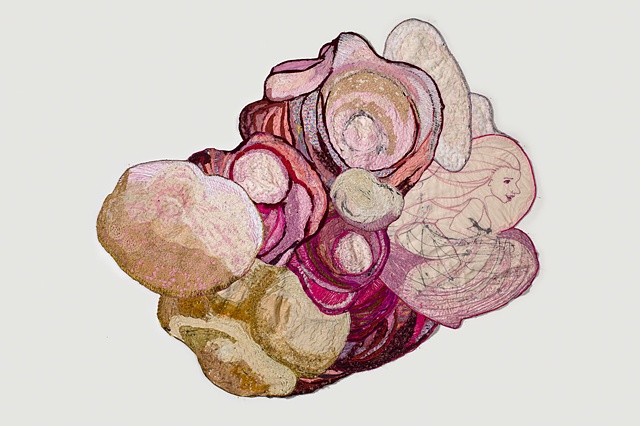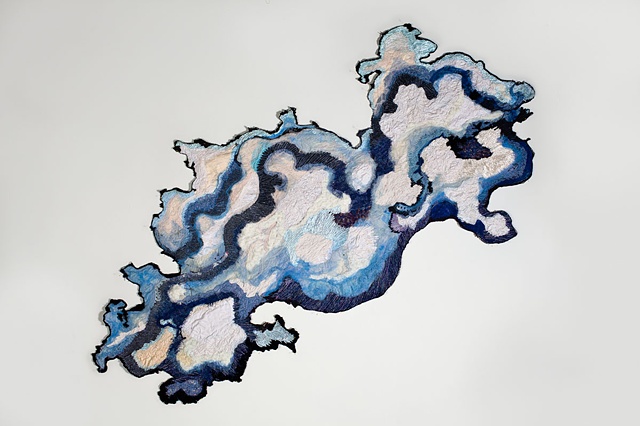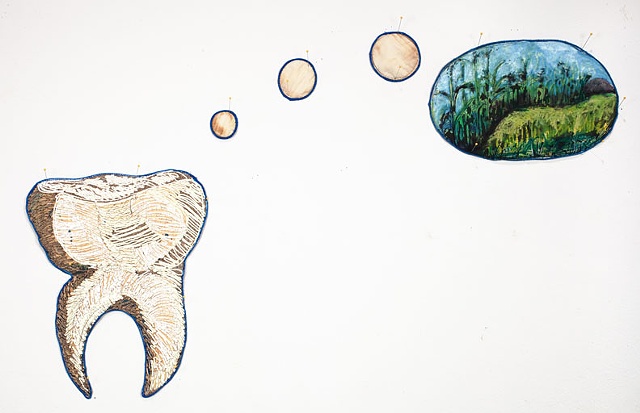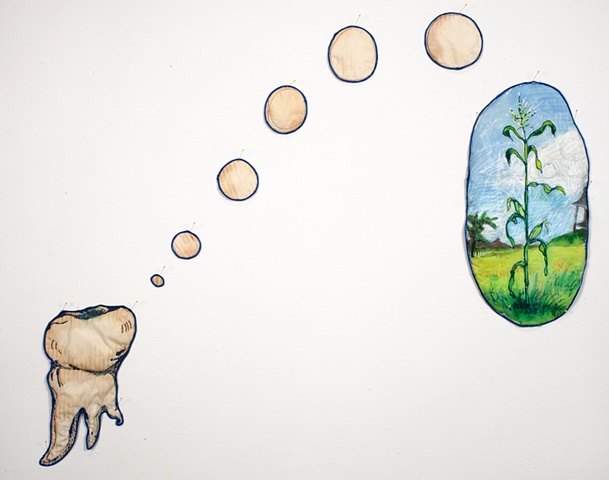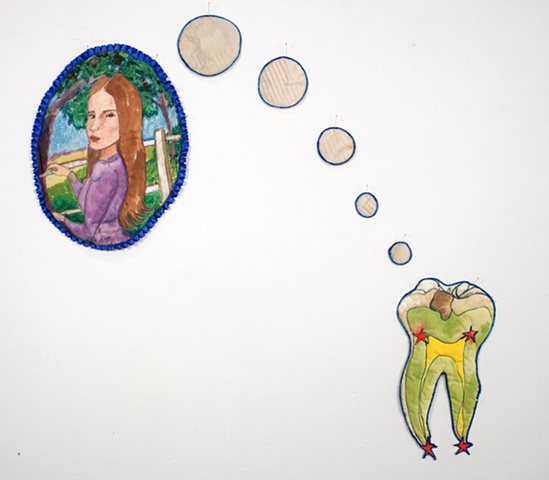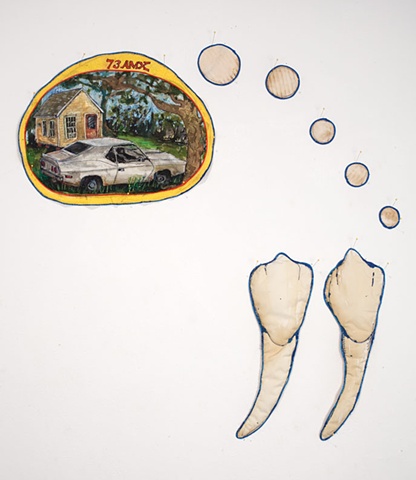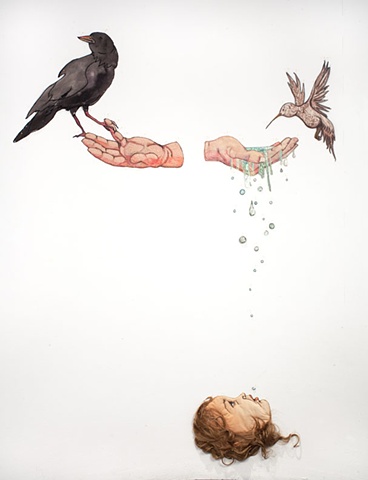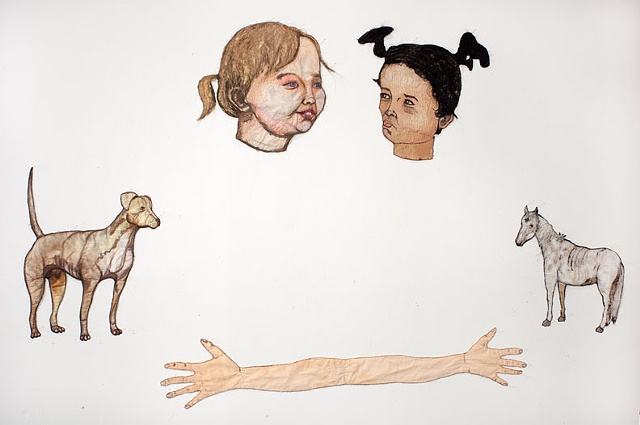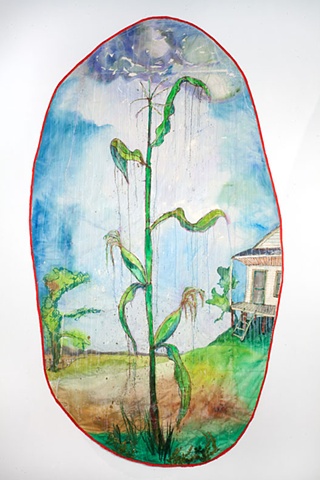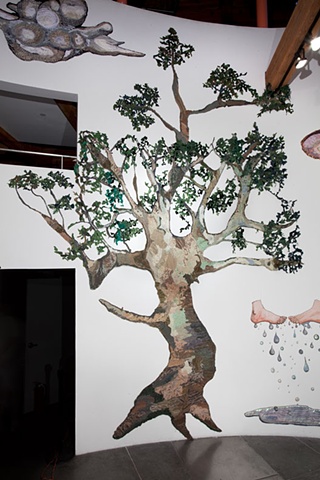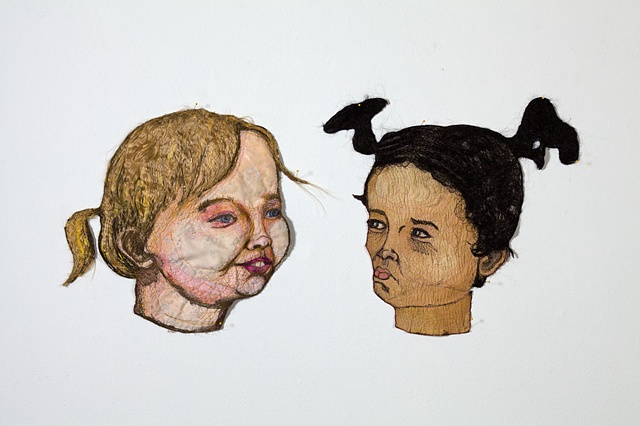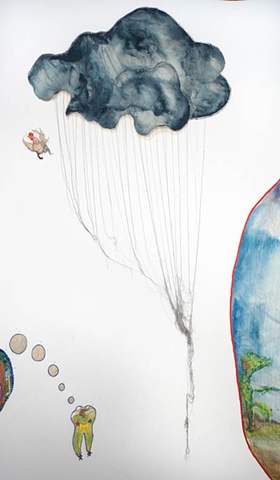Life Lasagna
Life Lasagna
Gina Phillips
“I don’t have a photograph, but you can have my
foot prints. They’re upstairs in my socks.” Groucho Marx, A Day At The Races
I recently learned that the word, nostalgia, originated as a medical term. A person could be diagnosed with nostalgia. It was considered an illness, most commonly associated with soldiers fulfilling long tours of duty. It’s true; sometimes you can miss something so much you seem to feel it in your bones or in the pit of your stomach. I’ve been thinking about the root of nostalgia, and if I had to define it, I’d say that it’s driven by the sentimentality of mortality. In Life Lasagna, I wanted to convey something of the sensation of a life flash, like the moments before death or near death…the ultimate nostalgic experience. Hence, the cycle of life is evident in this work. Babies and bones (teeth are the body’s exposed bones…like our exoskeleton).
The imagery predominantly comes from two sources, childhood memories growing up in Kentucky and the Holt Cemetery located here in New Orleans. The Holt Cemetery, also known as the Pauper’s Cemetery, is a kind of spiritual mecca for me. I’ve visited it regularly since moving to New Orleans in 1995. Many of the tombstones are homemade and could be considered pieces of folk art in their own right. The graves are below ground, unlike the ostentatious “city of tombs” that New Orleans is known for. The interesting thing is that, like the mausoleums, the grave is shared with multiple family members. But unlike the architecture of an above ground tomb, where there’s space for more bones, Holt Cemetery gravediggers have to make more room for the newly dead by simply digging right into an existing grave and adding the new coffin. There’s a rule there that all coffins have to be made of wood so that the bodies and coffins can deteriorate together, thus making it possible, when the time comes, to dig into the same site. Folky, hand painted tombstones made of wood or concrete often contain up to ten names. Fresh graves are easy to spot. They’re mounded high with dirt and decorated with funerary wreaths and flower arrangements. It’s easy to find human remains mixed in with the dirt from these fresh graves…ribs, vertebrate and pieces of skull. I often pick up the bones and look at them and then put them back on the ground. I always think about the food the person ate that made the bone and what their life might have been like.
One of the strategies the families use to maintain their loved one’s graves is to cover the site with blankets and carpets. I think of it as their way of being discreet about their family member’s remains, since the bones seem to want to make their way to the light of day. Sometimes there are many layers of blankets and carpets and for good measure they’re weighted at the corners with rocks or concrete blocks.Holt Cemetery Tooth Comforter is a reference to this phenomenon. The stark white teeth are laid out against a warm neutral background, a reference to the freshly turned dirt and a reference to the absent body.
Sweaty Feet (Leakers) is inspired by a childhood memory. I grew up in a poor, rural home with my mother, grandparents and uncles. I was thinking about the summer’s, sitting on the couch in the living room, barefoot, sweating and noticing how my bare feet would leave sweaty foot prints on the worn-out hardwood floor. In Sweaty Feet (Leakers), the feet have become separate entities. They face off and are engaged in some kind of dialogue. It’s hard to tell if it’s a harmonious dialogue or an adversarial one, whether they’re feet belonging to two people or two feet from the same person. The sweat is profuse and it pours out of the bottom of the feet in large drops, but the sweat from each foot comes together as one pool underneath. The sweat could just as well be blood; it represents a life force. It’s hard not to read in this piece another layer of meaning referencing the experience of having gone through the devastation of Hurricane Katrina. Ultimately, Sweaty Feet (Leakers) is about the cycle of life.
In recent years, I’ve been using fabric and thread in a way that attempts to transcend the implicit folksiness/craftiness of the material and I’ve increasingly become more painterly in my applique techniques. In Life Lasagna, these painterly techniques are evident, but for the first time, I’m also espousing the sentimental qualities of fabric. Two of the pieces are functional quilts and others accentuate the material’s pillowy qualities…the intrinsic comfort factor of fabric. Baby Blanket is a functional comforter, designed to fit a twin-sized mattress. The puffy, white faces of the babies in Baby Blanket at first seem to imply tabula rasa, blank slates ready to face their futures. But there’s too much character embedded in each one’s face. It becomes clear that it’s more about nature rather than nurture and everyone seems to be who they are the minute they’re born.
Life Lasagna...teeth, skin, feet, hands, heads…parts of a whole…layers of life between the sky and the grave.
